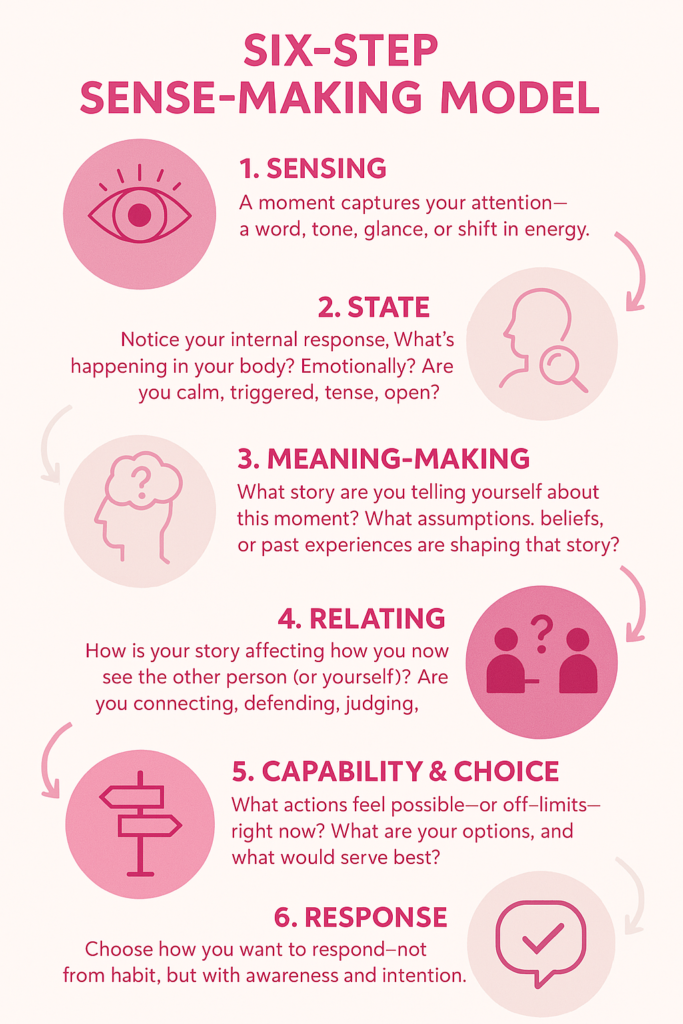One quote that has stayed with me ever since I read The 7 Habits of Highly Effective People by Stephen Covey is from Viktor Frankl:
“Between stimulus and response there is a space. In that space is our power to choose our response. In our response lies our growth and our freedom.”
― Viktor E. Frankl
Habitually, it’s easy to disregard that space. We have evolved to survive, to run away from danger, to ensure our (and our nearest and dearest) needs are met, that there is harmony and peace in our surroundings.
Our Reticular Activating System (RAS) is biologically wired to protect us. Layer in conditioning – the beliefs and stories passed down through families, cultural norms, organisational expectations, and environmental cues, it’s no wonder our internal autopilot kicks in so effectively.
Throughout my Barefoot course the biggest takeaway has been that I have choice and agency. More than I had ever fully realised. My tutor reminded us in every session just how much the language we use matters. How we ask a question, the language of our internal narrative. I quickly became aware that coaching is creating a thinking partnership. Helping to work through options and beliefs and bringing awareness to the coachee that ultimately frees them from their habitual thinking patterns and responses. Nurturing that space to choose an appropriate response. It’s magical.
I’ve developed a sense making model that helps me nurture that space / that pause to give myself a good chance for my response to align with my values and the person I want to be. When we interrupt that default loop and get curious, we create the space to choose a different, more intentional response.
Six-Step Sense-Making Model

1. SENSING
A moment captures your attention – a word, tone, glance, or shift in energy.
2. STATE
Notice your internal response. What’s happening in your body? Emotionally? Are you calm, triggered, tense, open?
3. MEANING-MAKING
What story are you telling yourself about this moment?
What assumptions, beliefs, or past experiences are shaping that story?
4. RELATING
How is your story affecting how you now see the other person (or yourself)?
Are you connecting, defending, judging, withdrawing?
5. CAPABILITY & CHOICE
What actions feel possible or off-limits right now?
What are your options, and what would serve best?
6. RESPONSE
Choose how you want to respond, not from habit, but with awareness and intention.
Following this approach creates a real-time reflection tool to help you:
- Slow down your default patterns
- Make clearer, more conscious meaning
- Act from choice, not autopilot